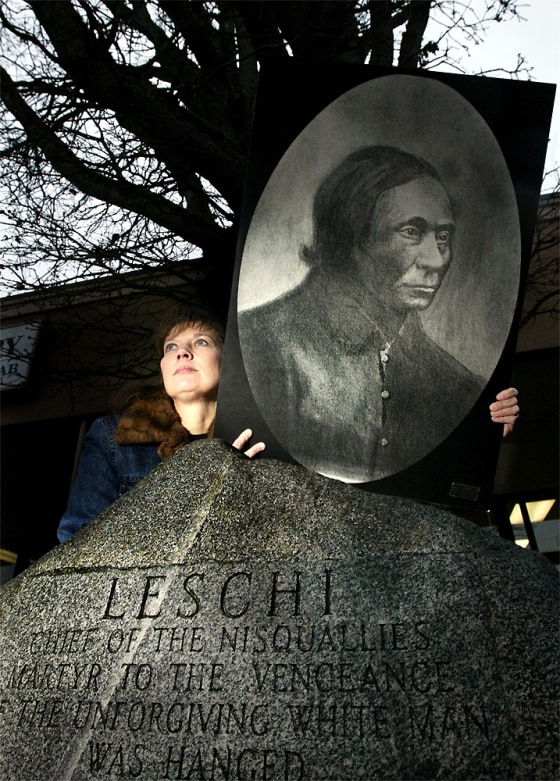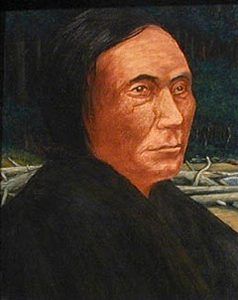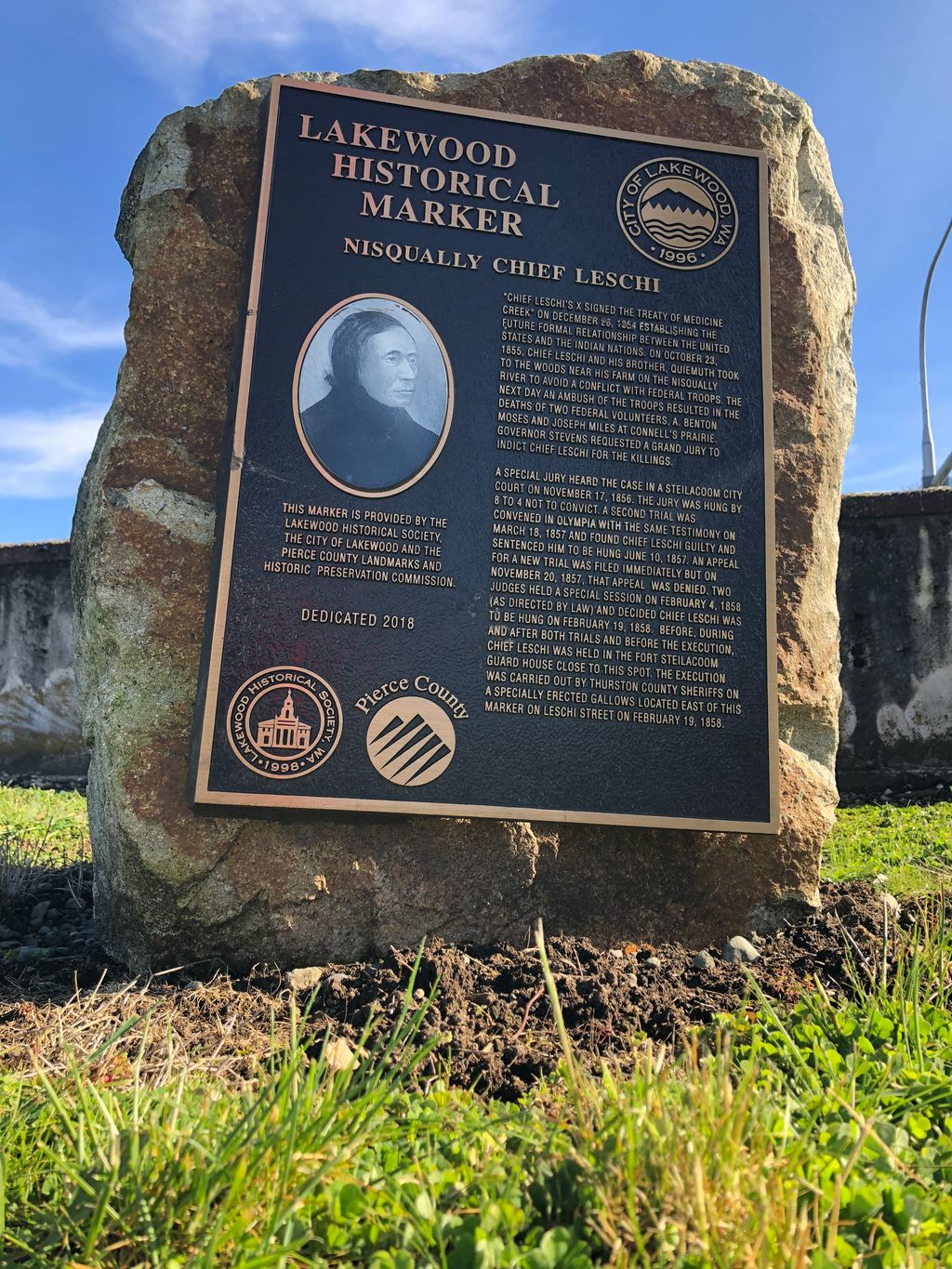
The Unvarnished Truth: Chief Leschi’s Capture and America’s Enduring Legends
America, a nation forged in grand narratives and epic tales, often prides itself on its legends. From the pioneering spirit of the West to the mythic figures of industry and innovation, these stories shape our national identity. Yet, beneath the veneer of triumphant expansion and manifest destiny lie other, more uncomfortable legends – tales of broken promises, profound injustice, and the brutal cost of nation-building. Among these, the tragic saga of Chief Leschi of the Nisqually and Muckleshoot peoples stands as a potent, searing indictment, a story that encapsulates the profound clash of cultures and the often-unvarnished truth of America’s past. His capture, trial, and execution are not merely historical footnotes; they are a journalistic exposé of the very foundations upon which many of our cherished myths were built.
For generations, the figure of the "Indian Chief" in popular American lore has been caricatured, romanticized, or villainized, rarely presented with the complex humanity and moral fortitude that defined men like Leschi. Born around 1808, Leschi was a respected leader and a man of peace, deeply rooted in the ancestral lands of the Puget Sound region, now modern-day Washington State. His people, like countless others across the continent, lived in harmony with the land, their lives dictated by the seasons, their traditions rich with wisdom passed down through millennia. But the mid-19th century brought an unstoppable tide of change – the relentless westward expansion of American settlers, driven by the ideology of Manifest Destiny and fueled by the promise of free land and abundant resources.
The pivotal moment in Leschi’s fate, and indeed for many tribes of the Pacific Northwest, arrived with the Treaty of Medicine Creek in 1854. Orchestrated by Isaac Stevens, the ambitious and often ruthless first governor and superintendent of Indian Affairs for the Washington Territory, the treaty was a masterclass in coercion and deceit. Tribes were strong-armed into ceding vast tracts of their ancestral territories in exchange for meager reservations, often on lands unsuitable for their traditional way of life, lacking access to fishing grounds or camas prairies vital for their sustenance.

Leschi, along with other far-sighted leaders, immediately recognized the devastating implications of the treaty. The Nisqually reservation, for instance, was located in an arid, rocky area away from the river that was the lifeblood of his people. He vehemently protested, arguing that the treaty, as written and interpreted by Stevens, was a death sentence for his community. "We want the land where we live," he is reported to have said, a simple plea for the right to exist on their own terms. When his pleas were ignored, and the treaty was unilaterally declared ratified, the simmering resentment among the tribes boiled over. The stage was set for the Puget Sound War of 1855-1856.
Leschi, a man who had initially sought peace and negotiation, found himself reluctantly drawn into leadership during the conflict. He became a principal figure among the allied tribes resisting the American encroachment, not as a bloodthirsty warrior, but as a defender of his people’s sovereignty and their very survival. He fought strategically, seeking to minimize bloodshed on both sides while protecting his community from the relentless pressure of the territorial militia. His actions were those of a belligerent in war, seeking to preserve his people’s way of life against an invading force, a context that would later be twisted into a narrative of criminal aggression.
The turning point, and the most searing part of Leschi’s legend, was his capture. As the war wound down and the tribes, facing overwhelming odds, were forced to retreat and surrender, Leschi remained a defiant symbol of resistance. Governor Stevens, determined to make an example of him, put a bounty on his head. It was a cruel irony that Leschi was ultimately betrayed and captured by members of his own people – a desperate act by some who were either coerced, bribed, or simply exhausted by the conflict and hoped to appease the Americans. In November 1856, he was delivered to the authorities, not as a prisoner of war, but as a criminal to be tried for murder.
The charge against Leschi was the killing of Colonel A. Benton Moses, a militiaman, during a skirmish in the Muckleshoot Prairie. This was the crux of the injustice: Leschi was a combatant in a war, defending his territory and people. Under any reasonable interpretation of international law or even the prevailing customs of warfare, his actions, if they involved the death of an enemy soldier in battle, would be considered an act of war, not a civilian murder. Yet, the territorial government, eager to assert its dominion and quell any further resistance, sought to prosecute him as a common criminal.
Leschi’s trial was a travesty of justice, a journalistic exposé of legal manipulation designed to achieve a predetermined outcome. He faced two trials. The first, in November 1857, resulted in a hung jury, with some jurors recognizing the fundamental unfairness of the charge. One juror, a former soldier named William H. Wallace, famously stated, "I will not hang an innocent man." This momentary flicker of justice was quickly extinguished. Governor Stevens, infuriated, ensured a second trial would proceed with a more compliant jury.
The second trial, held in January 1858, was a swift and brutal affair. Despite compelling testimony from witnesses, including some who were present at the skirmish and attested that Moses was killed by a stray bullet from his own side, Leschi was convicted. The verdict was a foregone conclusion, driven by political expediency and racial prejudice rather than evidence. His execution was set for February 19, 1858.
On that cold winter day, Leschi faced his fate with dignity and defiance. He reportedly refused to implicate anyone else or to beg for mercy, maintaining his innocence and the righteousness of his cause. His last words, according to some accounts, were a powerful statement of his spiritual connection to the land and his people. He was hanged, a "judicial murder" as many of his supporters, both Native and white, called it, including the acting governor at the time, Charles H. Mason, who had tried to commute his sentence. Leschi’s body was interred near Lake Steilacoom, but his spirit, and the injustice of his death, lingered.
The legend of Chief Leschi did not end with his execution; it began anew. For generations, his story became a whispered testament to broken treaties and the struggle for Native American rights. It became a powerful symbol for the Nisqually, Muckleshoot, and other Coast Salish tribes, a reminder of their resilience and the enduring trauma of colonization. His name graced schools, parks, and streets, a quiet acknowledgment of his historical significance, even as the full truth of his story remained partially obscured by official narratives.

It took nearly 150 years for a semblance of official justice to arrive. In 2004, the Washington State Historical Society convened a special Historical Court of Inquiry, an unprecedented move to re-examine the historical record. After hearing extensive testimony and reviewing documents, the court unanimously concluded that "Chief Leschi was unjustly executed." They found that he was not a murderer but a combatant in a war, and therefore should have been treated as a prisoner of war, not a criminal. This exoneration, though posthumous, was a monumental act, a journalistic correction of historical injustice that resonated far beyond Washington State. It was an acknowledgment that the American legal system, in its pursuit of land and power, had failed spectacularly and tragically.
Chief Leschi’s capture and execution represent more than just the biography of one man; they are a microcosm of the larger, often painful legends of America. They challenge the simplistic narratives of heroic pioneers and a benevolent westward expansion, forcing us to confront the human cost of empire. His story reminds us that many "legends" were forged in the crucible of conflict, defined by the suppression of indigenous voices and the systematic dispossession of their lands and cultures.
Today, as America grapples with its complex identity and strives for a more inclusive understanding of its past, the legend of Chief Leschi serves as a vital reminder. It urges us to look beyond the surface, to question official histories, and to listen to the voices that have long been marginalized. It is a call to acknowledge the full spectrum of our national heritage – not just the triumphs, but also the tragedies and injustices. Only by confronting these unvarnished truths can we truly understand the legends that shape us and move towards a more just and equitable future. Leschi’s legacy is not just one of martyrdom, but of an enduring spirit of resistance and a timeless plea for justice that continues to echo across the American landscape.


